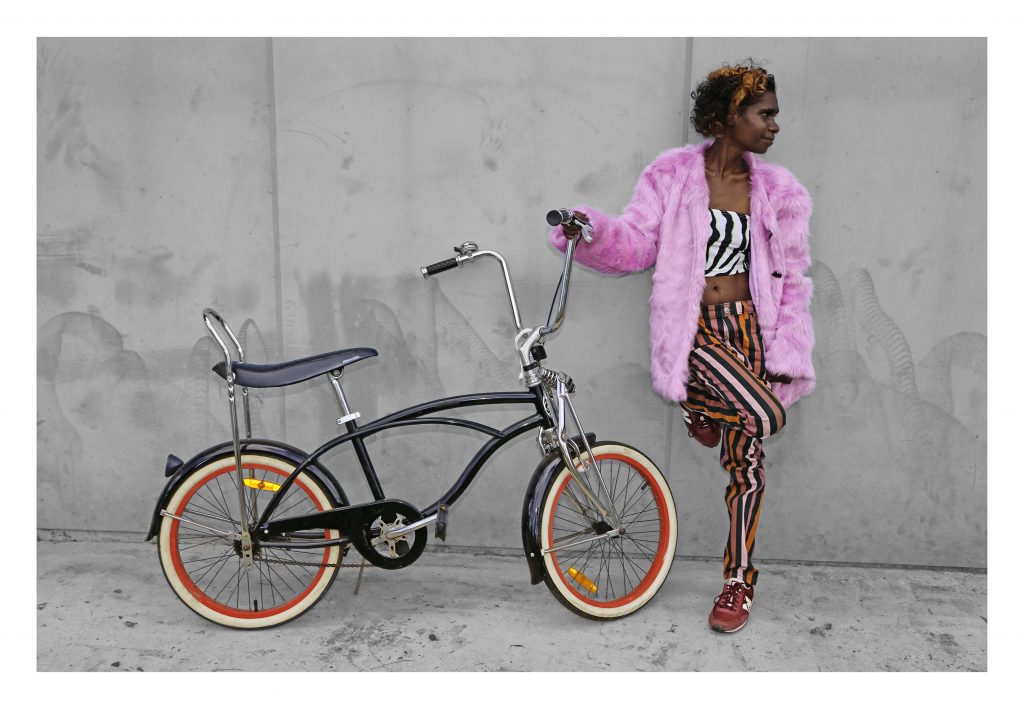Hi Naomi, can you tell us a bit about yourself and your practice?
I am an artist of Southern Kaantju descent who works across painting, photography, and ceramics. My photography work began when I started documenting my clan members as they worked on their traditional lands in Cape York, Queensland, Australia.
Alongside this I am a passionate advocate for the return of traditional lands, social and economic reform within my community and the importance young people play in building a better future.
How did the Adolescent Wonderland photos come about?
I’ve been thinking about the need for a fairer and more real representation of the young people in my community for about five years. So, you could say this series is my response to what I’ve been thinking about and what we talk about together; about life, the past, and the future. They have a flair for engagement with their world that needs to be shown.
The use of colour in the images is very striking, can you talk us through that choice?
I wanted to emphasise humanity and personalities more than the surrounding environment.

Fish Boys (c) Naomi Hobson
Why was it important to you to capture First Nations young people living in Coen?
Capturing the young people in my home community is so important because it has enabled them to represent themselves how they want to be represented; in full colour, living life and showing people what it really looks like without inhibition.
People of indigenous backgrounds need to be heard. I wanted to give the young people a platform to raise their visibility, to allow them to be seen and heard. I am from the community, so I’ve always felt the need for my people to tell our own story through photography.
I hope that through this project that I can challenge stereotypes about First Nations Australians. People think we are isolated from the world, but we are not; engagement with modern technology gives our young people the opportunity to be part of the world and develop a very savvy style in an ever-shrinking world.

Super Hero Boy (c) Naomi Hobson
What was the process of working with the young people and getting them involved?
Because of family and personal relationships, the process was more of a fluid engagement with each other. I captured them in their natural environment, swimming, riding bikes, listening to music. Just being themselves living in their community, in remote Northern Australia. They all know me. I know them and they have known my work for the last 18 years or so years, so when I’m with my camera, they want to talk, they see the camera as an opportunity to be heard.
They enjoy working with me and getting involved in projects, it creates purpose for them and value; they want their stories told to a wider audience.
What’s on the horizon for 2024?
I can’t wait to visit London and meet all the exceptional people that helped put the Adolescent Wonderland exhibition together. I’m going to continue participating in more community projects within my community and region, also with the Horniman and hopefully extend myself into the communities in London when I visit, so that’s exciting for me and I’m looking forward to it.
I’m also working on a photographic book for Adolescent Wonderland; I really like the idea of this series being able to reach a wider audience.
Hopefully the photographs can travel around the world and encourage other young people to live a life where they are their own narrative to their life story no matter what the colour of your skin, your religion and background.

Daley’s Bike (c) Naomi Hobson


